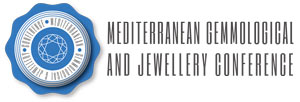In Naples, at that time the third largest city in Europe and the undisputed capital of music, the 18th century was a vibrant crucible of ideas. It was a centre of Enlightenment philosophy and political and economic discourse, led by intellectuals such as Giambattista Vico, Antonio Genovesi, Ferdinando Galiani and Gaetano Filangieri. Revolutions in politics, agriculture, textiles and the definitive development of scientific research also marked this period.
The enigmatic figure of Raimondo di Sangro VII, Prince of Sansevero, continues to arouse interest and intrigue because he straddled a divide where his noble privileges, involvement in Freemasonry and allegiance to the absolute monarchy clashed with the burgeoning ideals of social progress, egalitarianism and rational thought, forces that inevitably laid the foundations for the establishment of the modern scientific method.

What distinguishes the Prince of Sansevero is his unique approach to the intellectual currents of his time. Although he was inspired by contemporary ideas and influences, he followed his own path of research. A man of encyclopaedic knowledge, he delved into the realms of alchemy and masonry, seeing science not as a method but as an esoteric journey, a gateway to awe and wonder. He was particularly fascinated by the themes of rebirth and palingenesis, and the liminal space between life and death.
Raimondo’s intellectual pursuits left no facet of knowledge untouched, including hydraulic engineering, pyrotechnics, fire-resistant materials, drinking water desalination systems and the waterproofing of fabrics.
The Sansevero Chapel, with its rich symbolism and masterful works of art, including the famous Veiled Christ by Giuseppe Sanmartino and the underground chamber containing the “Anatomical machines”, served as a canvas for his remarkable innovations.

Recent discoveries have shed further light on Prince Raimondo’s legacy. Analysis of the frame surrounding the relief above the chapel’s main altar revealed that it was not lapis lazuli, a costly gemstone of the time, but rather one of its mineral components, lazurite.

This groundbreaking revelation positioned Raimondo di Sangro as a key figure in the history of gemology, having successfully synthesised artificial gems and pigments from lazurite long before Jean-Baptiste Guimet’s Ultramarine synthesis of the costly blue pigment derived naturally from lapis lazuli, in 1828.

These are the results of an exhaustive study presented on 5th March, 2024 at the Sansevero Chapel Museum by its director, Maria Alessandra Masucci, and carried out by a team from the University of Bari Aldo Moro, led by Francesco Paolo de Ceglia and including Alessandro Monno, Gioacchino Tempesta from the Department of Earth and Environmental Sciences and Andrea Maraschi from the Inter-University Research Centre “Seminar for the History of Science”.

During on-site investigations, researchers also noted the unusual use of blue fluorescent fluorite as a sculptural material, particularly for the cushions of the statues of Saint Oderisius (Francesco Queirolo, 1756) and Saint Rosalia (Francesco Queirolo, 1756).


The full results of the study will be published on 6 March in an article entitled “In search of the Phoenix in eighteenth-century Naples: Raimondo di Sangro, nature mimesis, and the production of counterfeit stones between palingenesis, alchemy, art, and economy”, which is available online in open access as part of the latest issue of the scholarly journal “Nuncius. Journal for the Material and Visual History of Science”.

Analysis, therefore, for the first time confirms that the Prince of Sansevero was able to create the artificial Ultramarine blue used for the frame around the high relief above the high altar (Altare maggiore, Francesco Celebrano and Paolo Persico, 1860s).

To this day, this seems to be the earliest recorded example of the production of this artificial pigment, more than ten years before Goethe’s Sicilian report, which is considered by specialists to be the oldest indication of the artificial production of this pigment. In Raimondo di Sangro’s underground laboratory, around which numerous legends already hovered, the recipe for reproducing this colour as precious as gold had therefore already been found, and long ago.

Among his countless experiments, Raimondo di Sangro is known to have devoted himself to the production of artificial precious stones and the colouring of glass. Particular attention was given, by the Prince, to colours. Even those used for the vaulting of the Chapel – painted by Francesco Maria Russo, known as the Gloria del Paradiso or Paradiso dei di Sangro – are the result of his inventions: the blues, greens, golds, all bright and radiant colours, the product of a formula created by Raimondo di Sangro himself, which still today, after more than two hundred and fifty years, shine with the same intensity, as if the patina of time had in no way dimmed them.
















